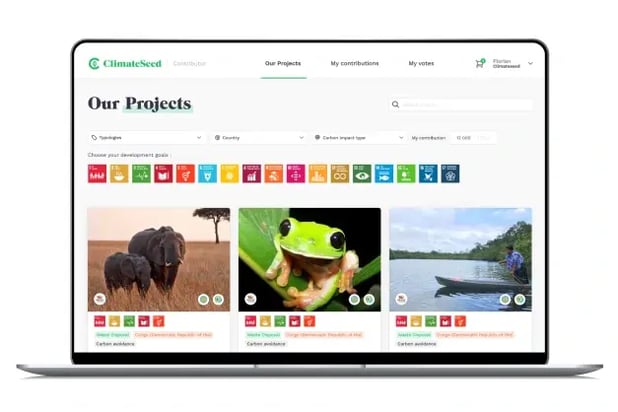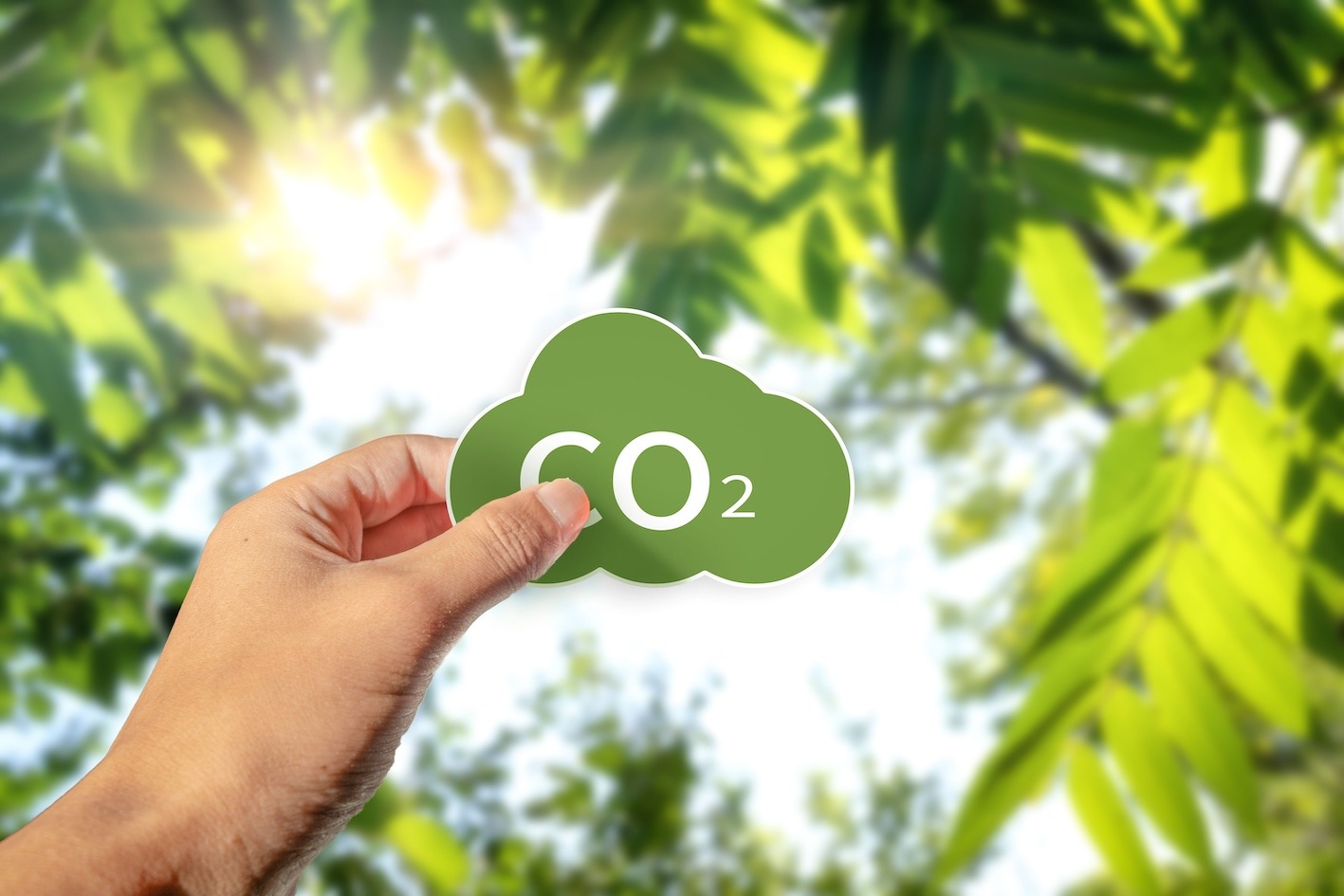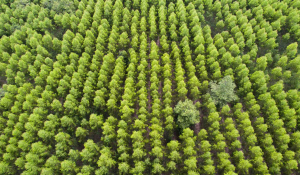Table of contents
1. Definition of carbon capture
2. Steps in the carbon capture and Storage process
4. Industrial applications and emission reduction potential
5. Challenges and future perspectives
6. ClimateSeed: your partner for supporting carbon capture projects
Conclusion: the role of carbon capture in the fight against climate change
Carbon capture (or Carbon Capture and Storage, also known as CCS) is a technological process designed to reduce CO2 emissions into the atmosphere. In the face of the climate emergency, carbon capture is seen as a key technological solution to limit greenhouse gas emissions (GHGs) responsible for global warming. The goal is simple: to intercept carbon dioxide (CO2) emitted by industries or captured directly from the air before it escapes into the atmosphere.
This technology is increasingly being highlighted as a cornerstone of global climate action. However, some view it as a concept akin to greenwashing— a false solution that diverts attention from real actions, such as the transition to renewable energy or improving energy efficiency.
The stakes are high, as carbon capture allows for the mitigation of emissions from polluting sectors while buying time to reform these industries. But exactly how does this process work, what are its applications, and what is its potential? Here’s everything you need to know about this technology. If you'd like to learn more about carbon credits and their role in a company's carbon footprint is, feel free to check out our dedicated page.
Definition of carbon capture
Carbon capture is a process that involves isolating CO₂ from the air or from gases emitted by industries before it is released into the atmosphere. This CO₂ can be captured directly from industrial smokestacks, or even directly from ambient air using specific technologies. The captured CO₂ is then transported and stored in a way that prevents it from escaping into the atmosphere, thus contributing to the reduction of greenhouse gases.
The carbon capture process has become a key element in global decarbonization strategies. It allows for the treatment of emissions that cannot be avoided directly, such as those from heavy industries. Indeed, carbon capture offers a way to manage CO₂ that complements efforts to reduce emissions at the source.
Steps in the carbon capture and storage process
The carbon capture process consists of three key stages: capture, transport, and storage.
1. Carbon capture
The carbon capture process begins by separating the gases. This is typically done by capturing CO2 from the combustion gases of power plants or factories. To achieve this, chemical solutions, often in the form of solvents, react with CO2 and isolate it from the other emitted gases. Another technique uses specific membranes capable of filtering out the CO2. Once captured, the CO2 is pressurized to facilitate its transport.
2. Carbon transportation
Once captured, CO2 is transported to storage sites via pipelines, trucks, or ships. The mode of transport varies depending on the distance and the amount of CO2 to be moved. The CO2 is compressed before being sent, reducing its volume and making transportation more efficient.
3. Carbon storage
Once at the destination, the CO2 is injected into deep geological formations, such as saline aquifers or depleted oil and gas reservoirs. These geological sites have the capacity to store CO2 safely and stably for thousands of years. Underground storage is an effective way to trap CO2 long-term and prevent it from impacting the atmosphere.
What are the methods of CO₂ capture?
There are various methods for capturing CO₂ depending on the industrial processes and pollution sources. The three main CO₂ capture techniques are as follows:
1. Post-combustion
Post-combustion capture is the most common method. It involves capturing CO₂ after the fuel has been burned. This process occurs at the exhaust of power plants and heavy industries. The CO₂ is separated from the combustion gases using chemical absorbents or special membranes.
2. Pre-combustion
Pre-combustion capture occurs before the fuel is burned. This method involves partially oxidizing the fuel before combustion and capturing the CO₂ before it is released. This approach is primarily used in gas-fired power plants and certain industrial processes, such as hydrogen production.
3. Oxy-combustion
In the oxy-combustion process, the fuel is burned in pure oxygen, rather than air. This results in combustion gases that mainly consist of CO₂ and water vapor, making it easier to capture the CO₂. This technique is still in the development phase but could play a significant role in large-scale decarbonization.
Industrial applications and emission reduction potential
Carbon capture has significant emission reduction potential in certain industrial sectors. The biggest contributors to CO2 emissions include cement, steel, chemical production, and electricity generation industries. Applying carbon capture in these sectors could have a major impact.
For example, the International Energy Agency (IEA) estimates that carbon capture could account for up to 15% of the global emissions reduction required by 2050. This potential could play a pivotal role in meeting global climate targets, particularly as a complement to the energy transition.
The cement sector is a notable example, as cement production accounts for nearly 8% of global CO2 emissions. Implementing carbon capture technologies in this sector could significantly reduce emissions.
Challenges and future perspectives
While carbon capture offers considerable benefits, several challenges remain. The cost of capture, transport, and storage technologies remains high, limiting their large-scale deployment. Additionally, the capacity of geological storage sites needs to be carefully evaluated to ensure long-term safety.
However, the European Union has set ambitious goals for CO2 capture. By 2040, the EU aims to capture at least 100 million tonnes of CO2 per year, with projections of 300 million tonnes per year by 2050. Investments in carbon capture technologies and pilot projects are increasing, which could help overcome some of the technical and economic barriers.
ClimateSeed: your partner for supporting carbon capture projects
ClimateSeed enables you to contribute to trusted carbon capture and avoidance projects that generate verified carbon credits. We provide access to a wide range of carefully selected projects, making it easy to find the right initiative for your goals.
We go beyond standard requirements to ensure superior integrity and quality. We are committed to sourcing top-tier projects through a through risk analysis and a rigorous three-level verification process. All selected projects offer significant co-benefits, particularly by aligning with the United Nations Sustainable Development Goals (SDGs).
Additionally, we provide customized project portfolios, allowing the acquisition of high-quality carbon credits through one-time purchases, multi-year agreements, or financing of early-stage projects. We offer tailored support to help businesses build their impact portfolio and develop an effective strategy in the Voluntary Carbon Market (VCM).
To enhance transparency, our ClimateSeed contribution platform provides access to a detailed project portfolio and offers simplified carbon credit management, including tracking retirements, issuing certificates, and providing guidance to maximize impact and avoid greenwashing. An intuitive dashboard gives a clear view of transaction history with secure transactions supported by a registered payment service provider. Finally, consolidating documents related to carbon credit purchases in one place streamlines the management of operations.

Conclusion: the role of carbon capture in the fight against climate change
In conclusion, carbon capture is a key tool in the fight against climate change, but it should be viewed as a complementary solution to other approaches, such as the deployment of renewable energy, improving energy efficiency, and reducing fossil fuel consumption. It offers an effective means of mitigating emissions from hard-to-decarbonize sectors and reducing the impact of CO2 already in the atmosphere.
It is crucial to continue investing in carbon capture technologies and overcoming the economic and technical challenges to maximize their potential. Combining carbon capture with ambitious climate policies could provide a viable path toward a more sustainable future.
Sources:
-
International Energy Agency (IEA). "Carbon Capture, Utilization, and Storage." IEA, 2021. www.iea.org
-
Global CCS Institute. "The Global Status of CCS 2020." Global CCS Institute, 2020. www.globalccsinstitute.com
-
European Commission. "EU Strategy for Carbon Capture and Storage." European Commission, 2020. ec.europa.eu
-
Cement Sustainability Initiative (CSI). "Cement Industry and Carbon Capture." World Business Council for Sustainable Development, 2021. www.wbcsd.org
Common Q&As
Some view carbon capture as greenwashing when it is presented as a magic solution to avoid taking real action on emissions reduction or energy transition. It is essential not to use it as an excuse to continue fossil fuel use.
The primary sectors using carbon capture are steel, cement, chemicals, and electricity generation.
It plays a crucial role by reducing emissions from hard-to-decarbonize sectors and supporting global climate goals.
Carbon capture could contribute up to 15% of the global emissions reductions needed by 2050, according to the International Energy Agency.
Share this
You May Also Like
These Related Stories

Understanding Carbon Credits and their role in Climate Action

Comparing Voluntary and Regulated Carbon Markets




